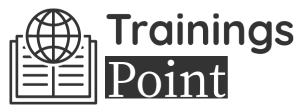You’ve made your decision about whom to hire. You’ve gotten them excited about their new job. You’re excited about what they can bring to your team. Now what?
If you’re like most good organizations, you’re doing something more. The Aberdeen Group reported that 70 percent of all organizations currently deploy some sort of onboarding program with leaders entering new roles. While this is a good thing, there is great variability in the focus, depth, and length of these programs. The most superficial tend to provide surface-level “meet and greets” and focus on initial paperwork and process knowledge. Others go deeper, focusing on helping leaders learn to navigate the organization’s culture and understand the informal organization and key players.
What does yours do? And do you even have an onboarding program?
Also, don’t forget internal transfers. Though onboarding usually focuses on people new to an organization, your current leaders entering new roles need assistance as well. Organizations are made up of many micro-cultures and the informal culture (how things really get done) is what typically drives an organization. Unwritten rules and politics, if not openly discussed, will create obstacles and slow execution.
Remember, you never get a second chance to make a good first impression. Onboarding isn’t just about facts; it’s about feeling, too. Effective onboarding programs provide an experience that helps new hires and leaders affirm that they made the right career move. This webinar will cover what you need to ensure your organization is building a stable, committed productive workforce from the start.
WHY SHOULD YOU ATTEND?
Is your hiring and onboarding process costing you unnecessarily? Did you know?
- Nearly 1/3 of people are job searching within six months of employment
- Almost 1/3 of externally hired executives miss expectations in the first two years
- With 10-15% annual attrition, companies lose about 60% of their entire talent base within four years
Introducing an onboarding program into your hiring process can mean the difference between retaining top employees or watching them walk out the door after several months. Companies that implement an effective onboarding program during the first three months of the new hire employment experience, will have 31% less turnover than those who don’t according to the Aberdeen Group.
Onboarding is important because it introduces the employees to the company’s culture and expectations and gives them the vital training and information needed to succeed in their new position. Also, a new hire’s compatibility or culture fit will likely be determined during the onboarding process. This can save the employer from a prolonged investment in the wrong person.
A strategic onboarding plan can dramatically impact your business. Investing in an onboarding process will help reduce turnover and increase new hire effectiveness. An onboarding program isn’t just more than a routine checklist; it should be a comprehensive process that makes the new employee and company confident they made the right choice and sure they can succeed in their new job.
LEARNING OBJECTIVES
Robust onboarding programs help your talent get up to speed faster and deter them from leaving for greener pastures. The learning objectives are:
- Learn six mistakes to avoid in your new hire onboarding process
- Review best practices in executive onboarding accelerating executive success
- Understand three onboarding approaches to integrate the new hire into their job and organization
- Review an onboarding 90-day timeline with essential tasks and tools to measure goals and milestones
- Identify the top derailers for the critical stakeholders: the manager, the new leader, human resources
- Learn from focus groups what new leaders consider the top onboarding issues and ways to ensure success
WHO WILL BENEFIT?
- CEO’s
- COO’s
- VP of Human Resources
- Chief Learning Officer
- Directors
- Project Managers
- Operation Managers
- Supervisors
- Team Leaders
- Human Resources Professionals
Is your hiring and onboarding process costing you unnecessarily? Did you know?
- Nearly 1/3 of people are job searching within six months of employment
- Almost 1/3 of externally hired executives miss expectations in the first two years
- With 10-15% annual attrition, companies lose about 60% of their entire talent base within four years
Introducing an onboarding program into your hiring process can mean the difference between retaining top employees or watching them walk out the door after several months. Companies that implement an effective onboarding program during the first three months of the new hire employment experience, will have 31% less turnover than those who don’t according to the Aberdeen Group.
Onboarding is important because it introduces the employees to the company’s culture and expectations and gives them the vital training and information needed to succeed in their new position. Also, a new hire’s compatibility or culture fit will likely be determined during the onboarding process. This can save the employer from a prolonged investment in the wrong person.
A strategic onboarding plan can dramatically impact your business. Investing in an onboarding process will help reduce turnover and increase new hire effectiveness. An onboarding program isn’t just more than a routine checklist; it should be a comprehensive process that makes the new employee and company confident they made the right choice and sure they can succeed in their new job.
Robust onboarding programs help your talent get up to speed faster and deter them from leaving for greener pastures. The learning objectives are:
- Learn six mistakes to avoid in your new hire onboarding process
- Review best practices in executive onboarding accelerating executive success
- Understand three onboarding approaches to integrate the new hire into their job and organization
- Review an onboarding 90-day timeline with essential tasks and tools to measure goals and milestones
- Identify the top derailers for the critical stakeholders: the manager, the new leader, human resources
- Learn from focus groups what new leaders consider the top onboarding issues and ways to ensure success
- CEO’s
- COO’s
- VP of Human Resources
- Chief Learning Officer
- Directors
- Project Managers
- Operation Managers
- Supervisors
- Team Leaders
- Human Resources Professionals
Speaker Profile
 Marcia Zidle
Marcia Zidle
Marcia Zidle, the Smart Moves Coach, is a board-certified executive and career coach, business management consultant, and keynote speaker, with over 25 years of management, business consulting, and international experience in a variety of industries including health care, financial services, oil and gas, manufacturing, insurance, pharmaceuticals, hospitality, government and nonprofits. She has expertise in strategy and alignment; executive and team leadership development; social and emotional intelligence; employee engagement and innovation; career and organization change management; employee relations and talent management. Marcia has been selected as one of LinkedIn Profinder’s top coaches for the past 7 years. Check out the 200 …
Upcoming Webinars

How to Write Contracts for Procurement Professionals

How to Deal with Employees Who Love to Argue and Debate Eve…

Project Management for administrative professionals


Sunshine Act Reporting - Clarification for Clinical Research

Onboarding Best Practices for 2025: Proven Strategies to Po…

Transform Data into Insights: A Beginners Guide to Excel Pi…

Reprogramming your mind for Corporate Excellence: 4 Steps t…

Terminating Toxicity: Strategies For Leaders To Confidently…

ChatGPT and Project Management: Leveraging AI for Project M…

Uplifting the Credibility of HR: How to Build the Credibili…

How to Manage the Legal Landmine of the FMLA, ADA and Worke…

How to Write Effective Audit Observations: The Principles f…


Strategic Interviewing & Selection: Getting the Right Talen…


Onboarding Best Practices for Millennial and All Employees

Performance of Root Cause Analysis, CAPA, and Effectiveness…

Bridging Generational Divides in the Workplace


Emotional Intelligence: Mastering the Emotions of Great Lea…

FDA Audit Best Practices - Do's and Don'ts

2-Hour Virtual Seminar on How to Conduct an Internal Harass…

Accounting For Non Accountants : Debit, Credits And Financi…

Successful Strategies for FDA Expedited Pathways for Your D…

Regulation update Q1 2025: New and Proposed Regulations for…

Unlock Employee Loyalty: Stay Interviews Will Keep Them Eng…

Pay Transparency in Action: Strategies for Building Trust a…

Designing Employee Experiences to Build a Culture of Compli…


Reinvent Your Business with the Power of AI

Excel Lookup Functions: VLOOKUP, HLOOKUP, and XLOOKUP Made …

Developing and Implementing Quality Culture in the Organiza…

Tips and Techniques for Conducting an Effective Fraud Risk …

Break Free from Toxicity: Reclaim Your Power and Peace


Physician Employment Agreements: Problem Areas that can be …

Measure the Effectiveness of Compliance Programs by Engagin…

FDA Regulation of Artificial Intelligence/ Machine Learning

Quality Management Systems and Data Integrity

Implementing an Effective Human Error Reduction Program

Navigating 2025 Employment Laws: What Every Employer Needs …

Cleaning Data without Complex Functions - A Course for Data…


Succession Plan for 2025: It's Not Just for Emergencies - I…

Employers Should Prepare for Immigration Raids in 2025! Thi…

Managing Toxic Employees: Strategies For Leaders To Effecti…


Using High-Performance Coaching for Managers to Address Per…

